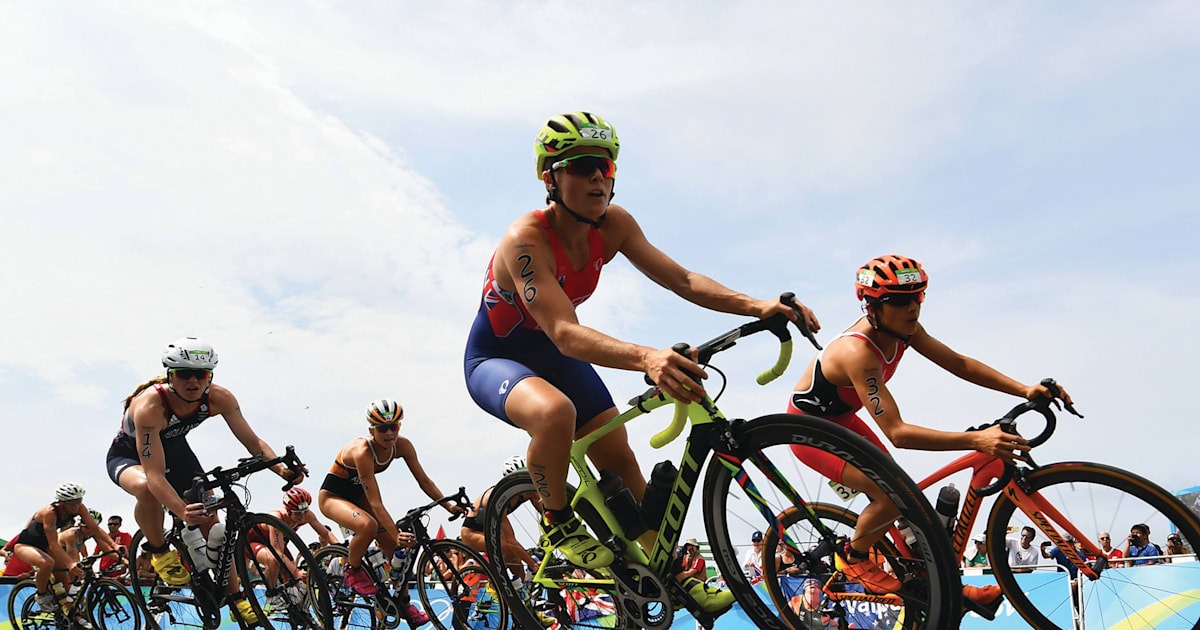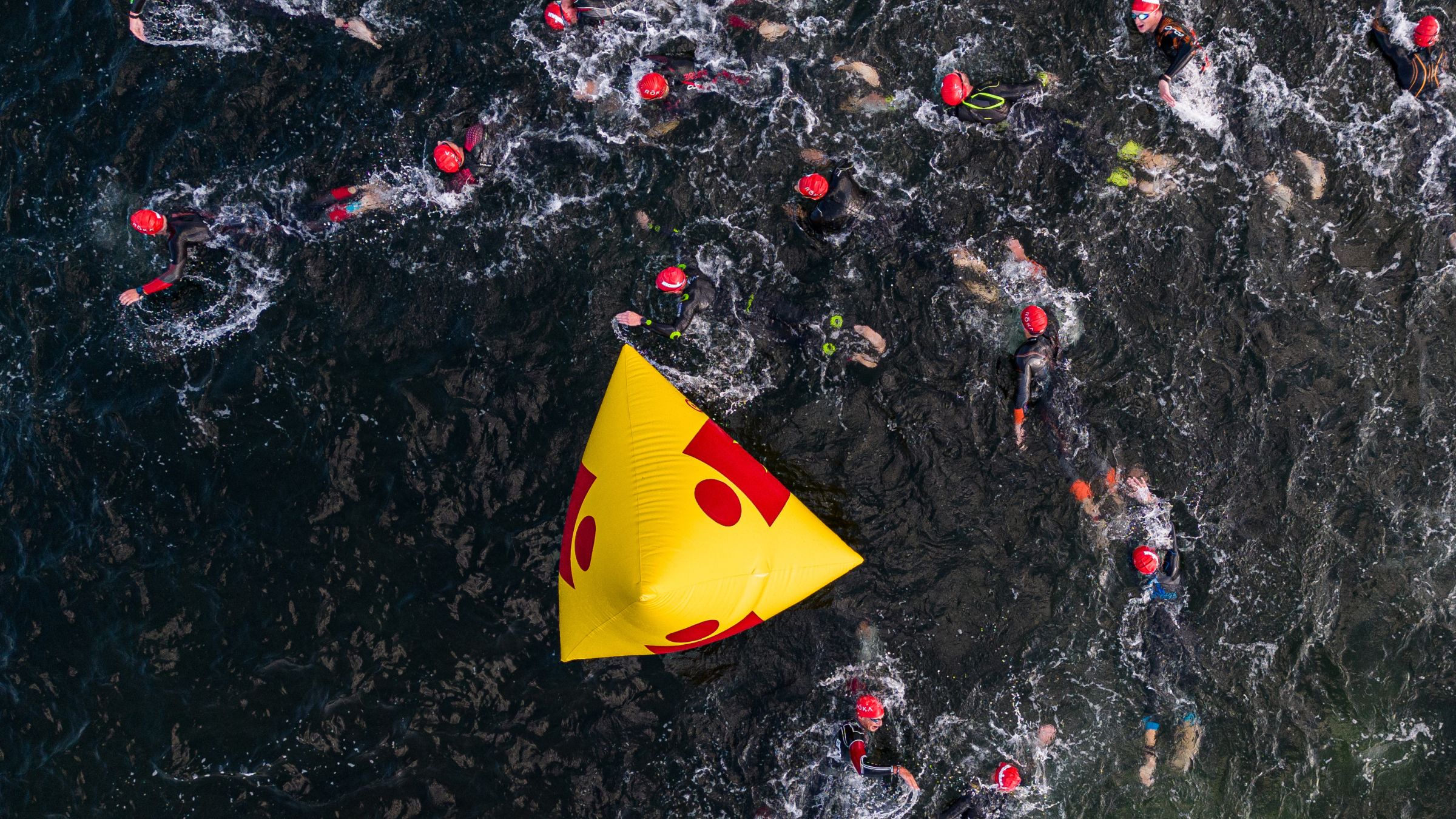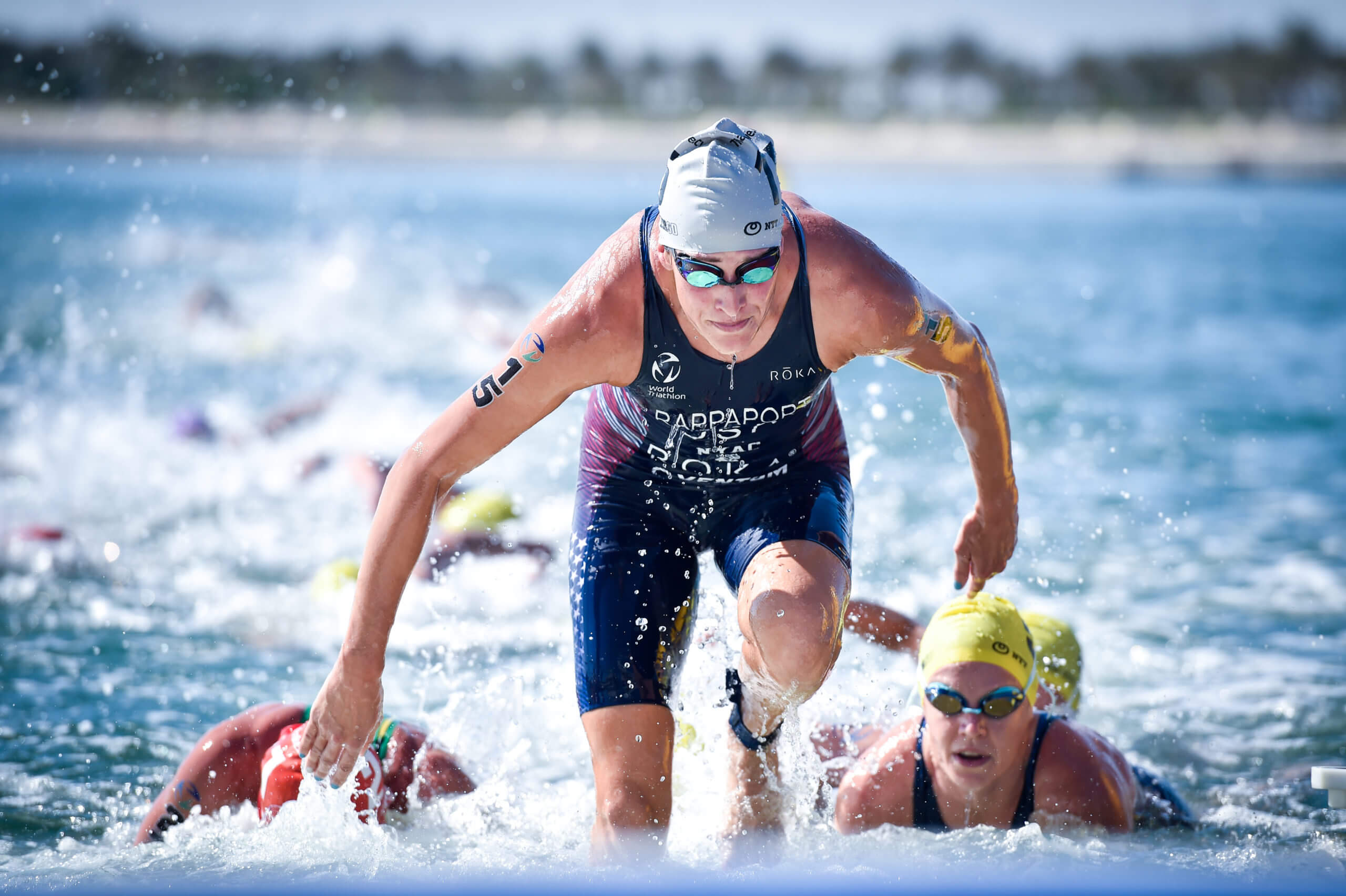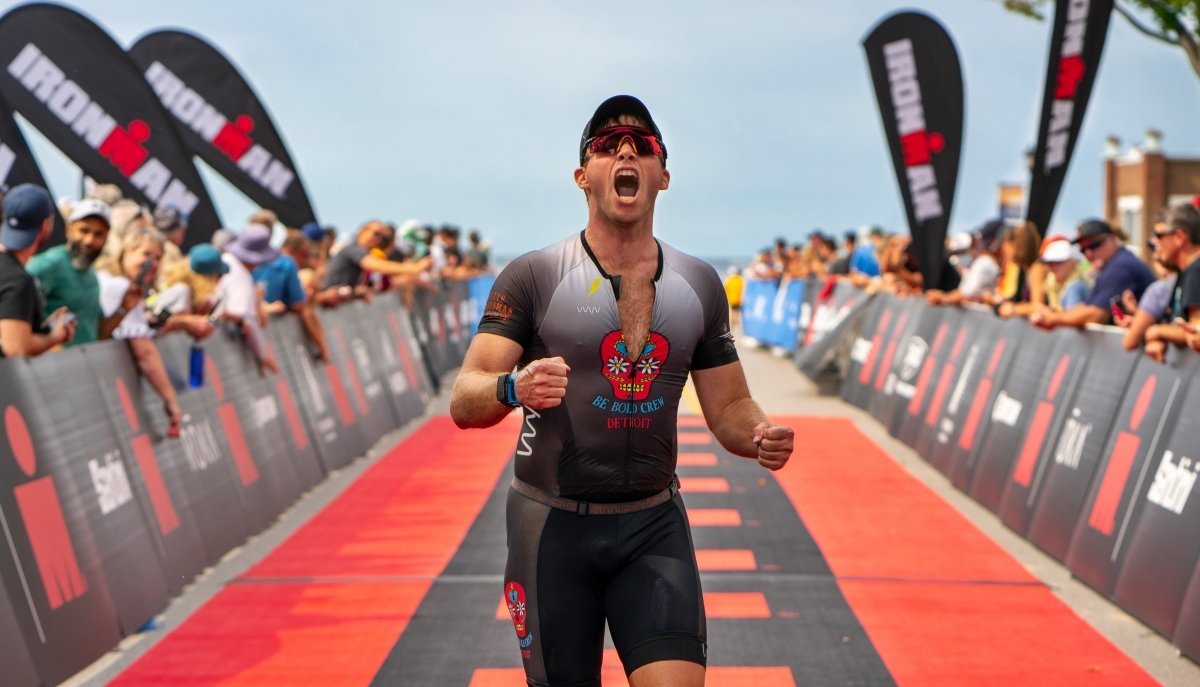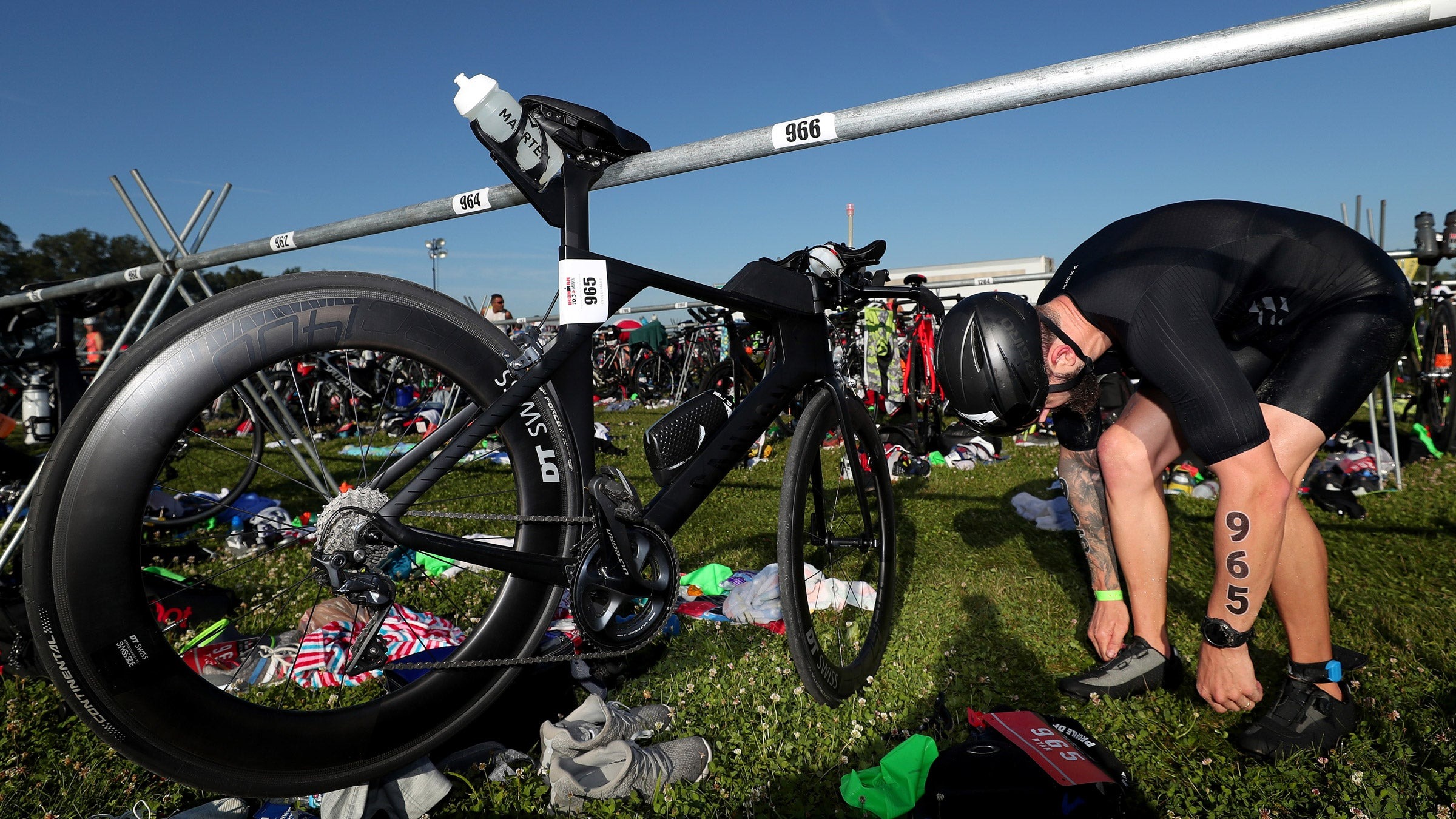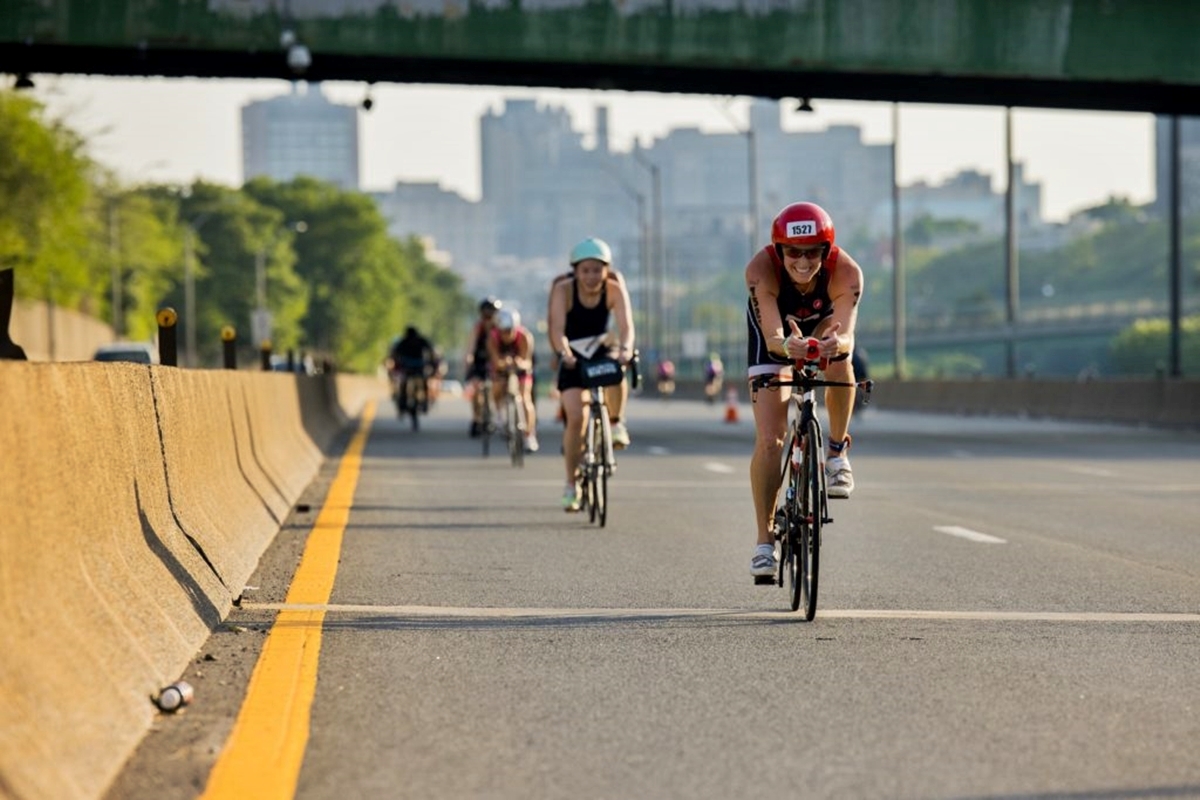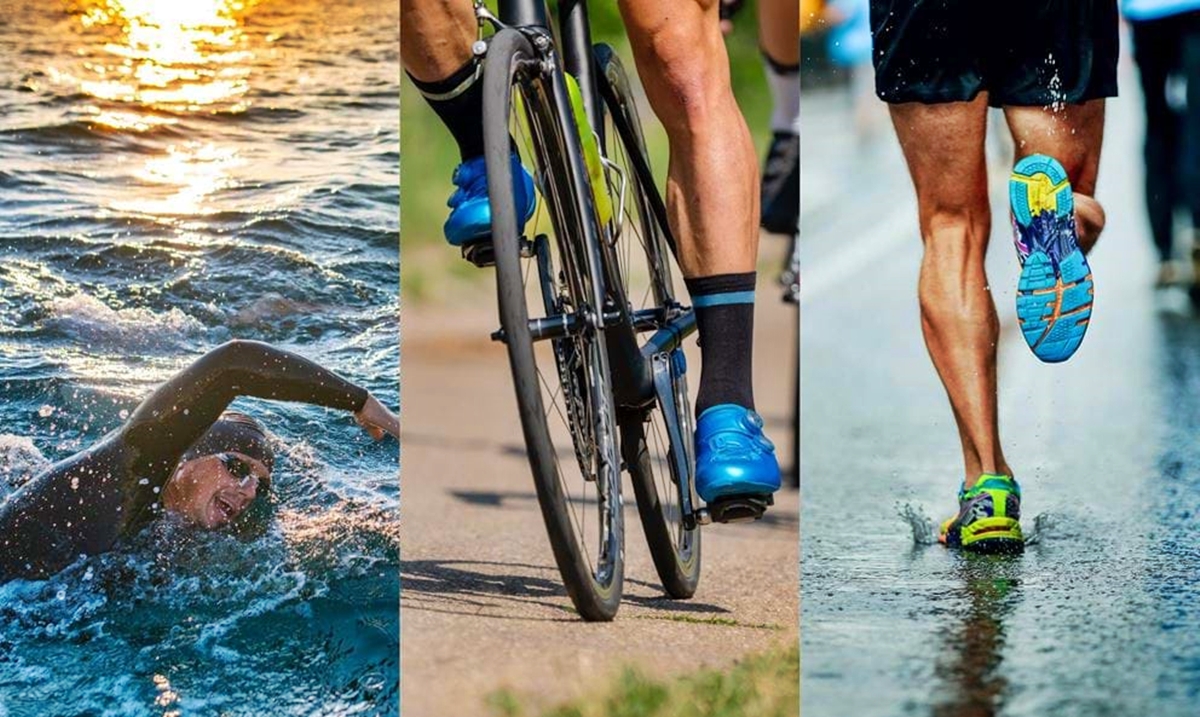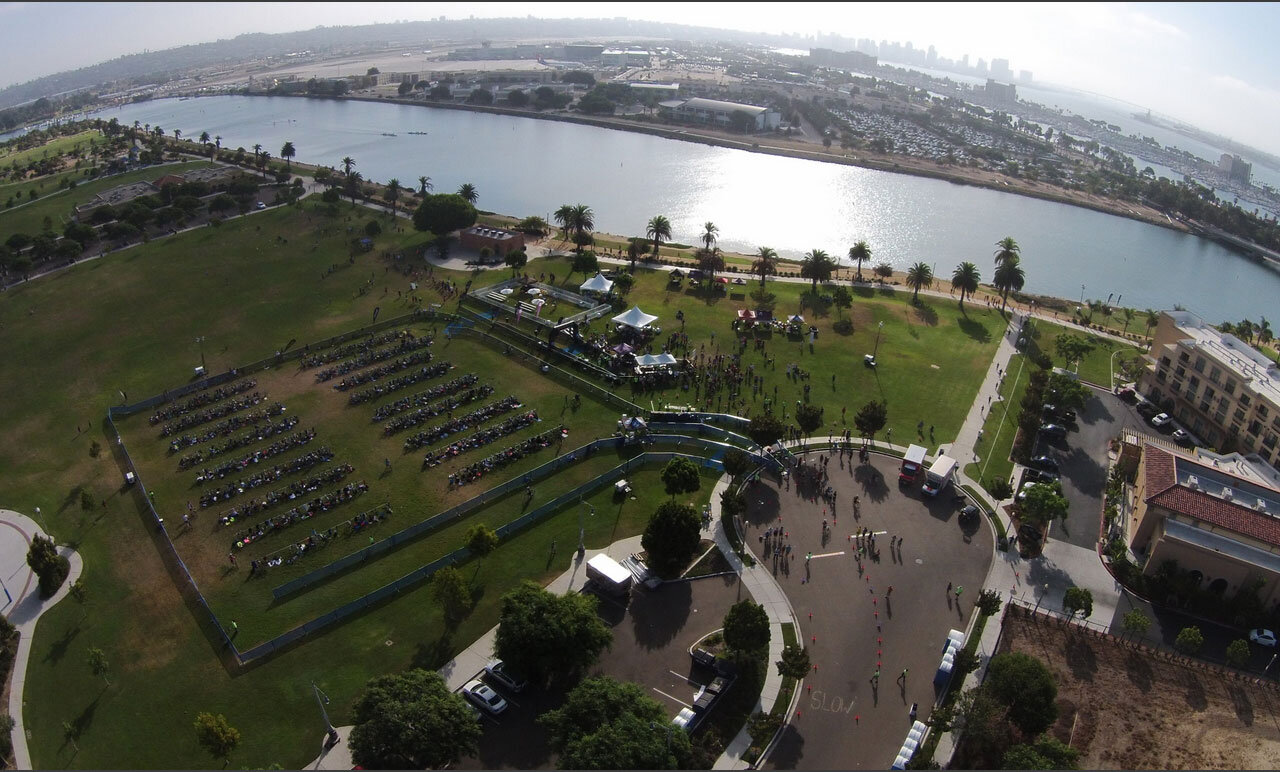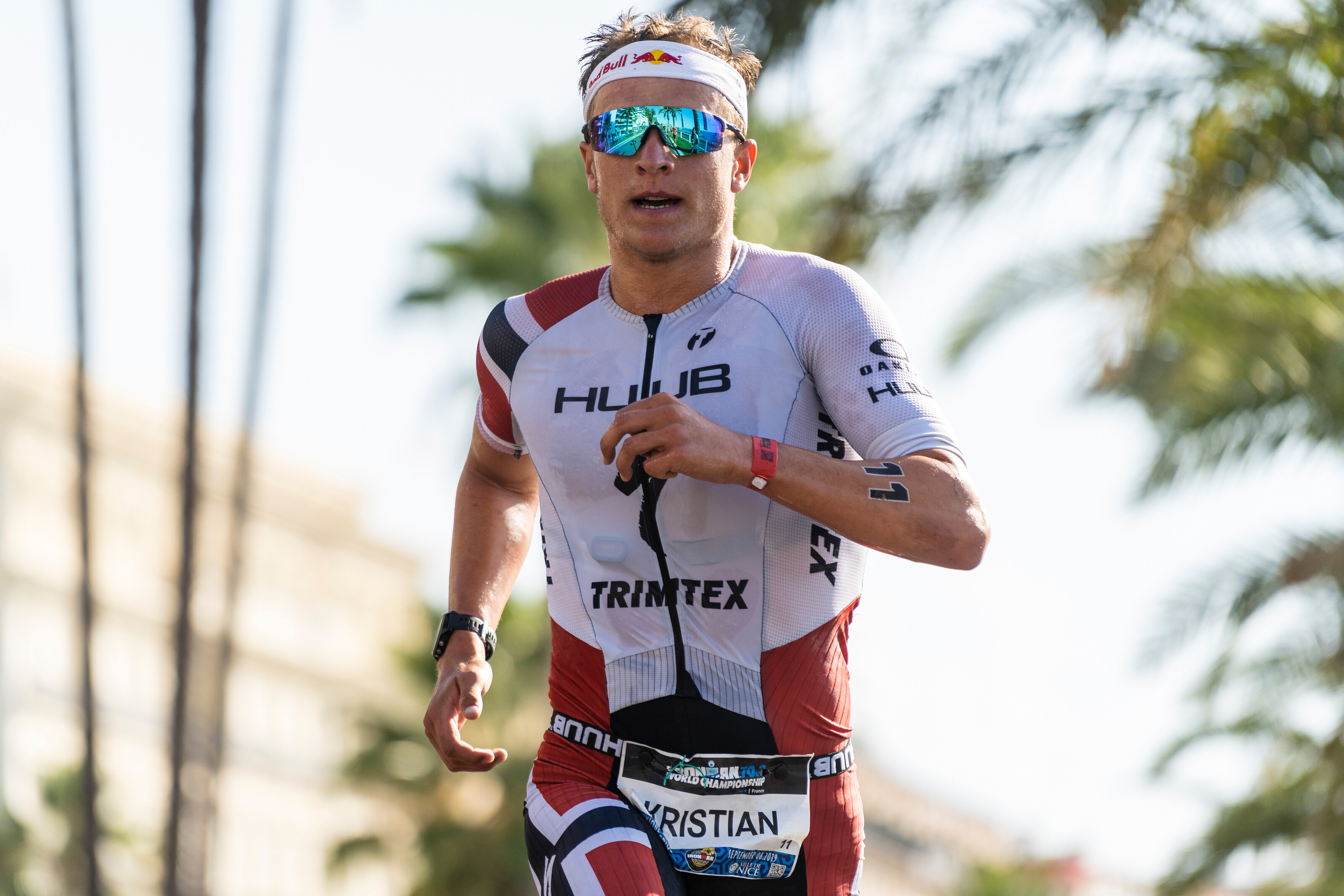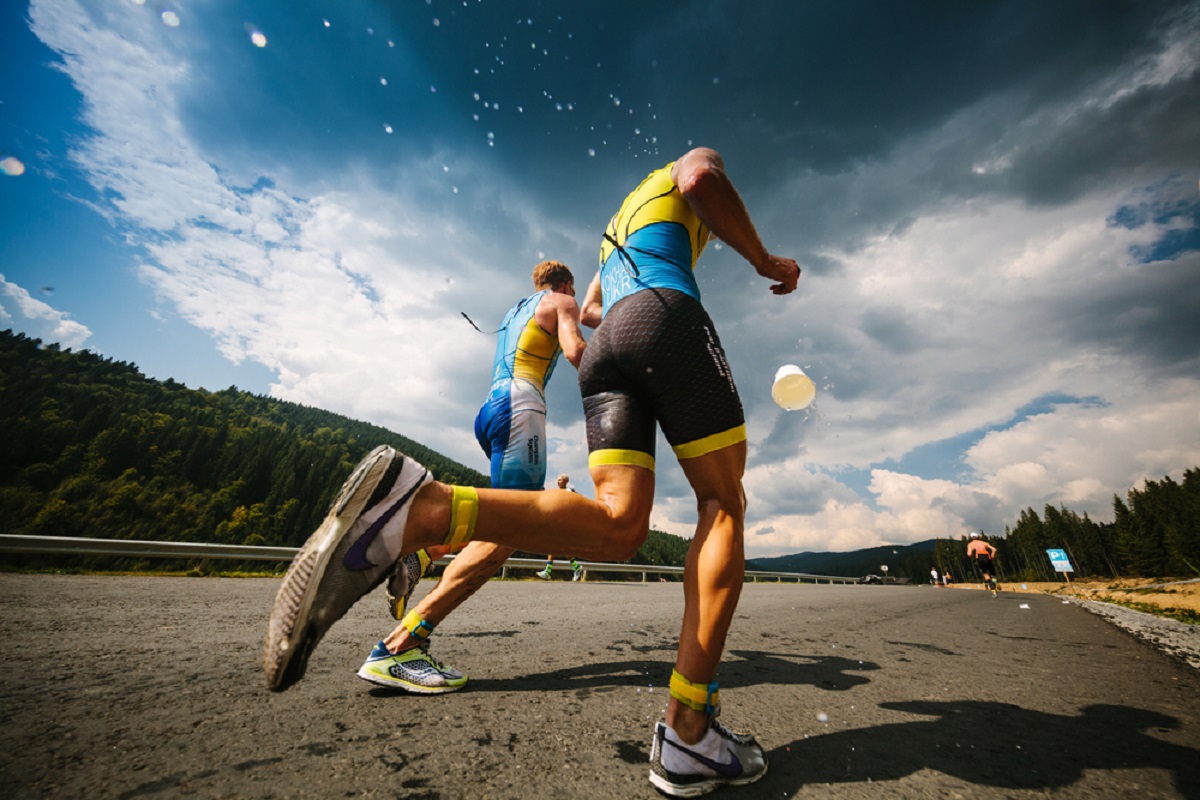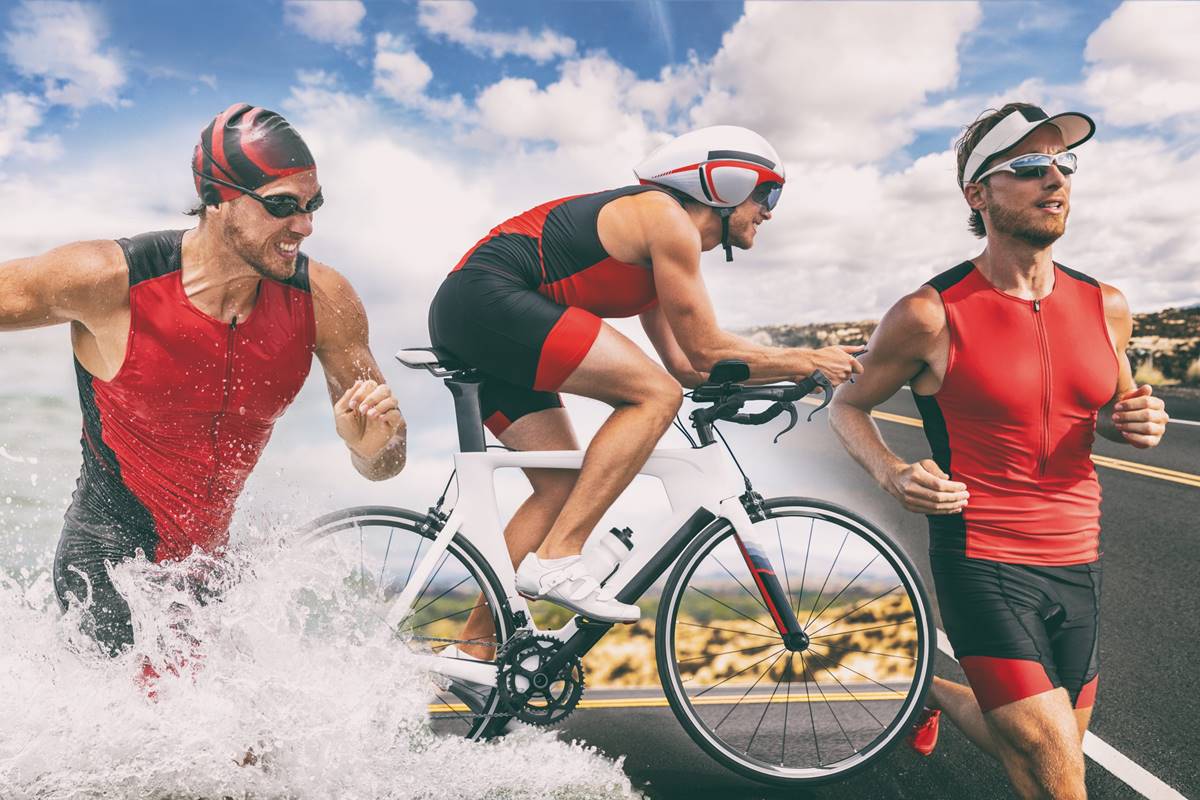

Featured
What Is the Order In A Triathlon
Modified: January 22, 2024
Discover the featured triathlon order and learn how to successfully complete a triathlon with our comprehensive guide. Find out the swim, bike, run sequence in a triathlon.
Introduction
Triathlons are multi-sport competitions that test an individual’s endurance, strength, and determination. The sport combines three disciplines: swimming, cycling, and running, in a single race. However, the order in which these disciplines are completed can vary depending on the type of triathlon being held. Understanding the order of a triathlon is crucial for athletes and spectators alike.
In a traditional triathlon, the swim leg is completed first, followed by the bike leg, and finally, the run leg. This is often referred to as the “swim-bike-run” order. However, there are variations of triathlons that may have alternative orders, such as the run-bike-swim order used in some off-road triathlons.
The order of events in a triathlon is strategic and designed to minimize the risk of accidents or collisions among participants. By starting with the swim leg, athletes can spread out in the water, reducing the chances of overcrowding and potential injuries. Additionally, starting with a swim allows participants to warm up their muscles and gradually increase their heart rate before transitioning into the more demanding bike leg.
Transition areas are designated zones where athletes can switch between disciplines. These areas are crucial in maintaining the flow of the race. After completing the swim leg, athletes enter transition area 1 (T1), where they change into their cycling gear. T1 is a high-pressure zone where every second counts. Athletes must efficiently remove their swim gear, put on their cycling shoes and helmet, and grab their bike before heading out onto the bike leg.
The bike leg is typically the longest portion of the race, and it requires endurance and stamina. Athletes navigate a predetermined route, often on public roads, while adhering to traffic rules and regulations. The bike leg is a test of both physical fitness and technical skills, as participants must handle their bikes safely and efficiently.
After completing the bike leg, athletes enter transition area 2 (T2), where they switch from their cycling gear to their running gear. Similar to T1, efficiency is key in T2 as athletes remove their helmet, change shoes, and prepare for the final leg of the race.
The run leg is the last stage of the triathlon and demands mental toughness and physical strength. Participants must push their exhausted bodies to run the designated distance, often finishing at the same location where the race began. The run leg is challenging, as athletes are fatigued from the preceding swim and bike legs, but it is also an opportunity for athletes to showcase their determination and willpower to cross the finish line.
Triathlons require tremendous effort, preparation, and training. The order of events is carefully planned to ensure a safe and fair competition. Whether you are an avid triathlete or a spectator, understanding the order of a triathlon is essential in appreciating the skills and commitment required to participate in this exhilarating sport.
Swim Leg
The swim leg is the first discipline in a triathlon and is often considered the most challenging for many participants. It tests not only physical fitness but also mental strength as athletes navigate through open water or swimming pools.
In open water triathlons, athletes may face a variety of conditions, including waves, currents, and unpredictable weather. The distance of the swim leg can vary depending on the race, ranging from sprint triathlons with a 750-meter swim to Ironman triathlons with a 3.8-kilometer swim.
As the competition begins, athletes dive into the water and make their way towards the first buoy, which marks the turning point of the swim leg. Swimmers must carefully navigate around other participants to avoid collisions and maintain their pace. Open water swimming requires a combination of endurance and technique, as athletes must efficiently move through the water while sighting the buoys and maintaining their course.
In pool-based triathlons, participants swim a predetermined number of laps in a swimming pool. Each athlete is typically assigned a lane or starts at timed intervals to avoid overcrowding. The swim leg in a pool-based triathlon is more controlled and often lacks the hazards present in open water races.
During the swim leg, participants may use different stroke techniques, including freestyle, breaststroke, or even a combination of strokes. The choice of stroke depends on the individual’s swimming ability and comfort. Freestyle is the most commonly used and efficient stroke for triathlons, as it allows for a smoother and faster swim.
Swimming in a triathlon requires proper training, preparation, and endurance. Athletes need to practice open water swimming and pool-based swimming to acclimate to different conditions. Developing strong swimming techniques, such as bilateral breathing and efficient body rotation, can significantly improve performance in this leg of the race.
Swim leg times can vary greatly depending on the individual’s swimming ability. Strong swimmers may complete the swim leg in under 10 minutes, while others may take closer to 20 minutes or more. It is important for athletes to find a sustainable pace that allows them to conserve energy for the remaining disciplines of the triathlon.
The swim leg sets the tone for the rest of the race. Successfully completing the swim leg requires not only physical strength but also mental focus and determination. It is the first step towards achieving the ultimate goal of crossing the finish line and can be both exhilarating and daunting for triathletes.
Transition 1
Transition 1, often referred to as T1, is the first transition in a triathlon that takes place after the swim leg. It is a critical moment where athletes switch from swimming gear to cycling gear in preparation for the bike leg. The efficient execution of T1 can save valuable time and give athletes a competitive edge in the race.
As triathletes exit the water, they make their way towards the transition area where their equipment is located. T1 is a bustling zone filled with participants, each striving to complete the transition as quickly as possible. In T1, athletes must navigate through the crowd while shedding their wetsuits or swim skins, goggles, and swim caps.
The first step in a smooth T1 transition is to locate and organize the cycling gear. Athletes typically set up their equipment in a pre-assigned space, often marked with a towel or a designated spot. It is crucial to arrange the cycling shoes, helmet, sunglasses, and any other necessary accessories in an orderly fashion, allowing for easy access and swift changes.
Once the gear is organized, athletes remove their swim gear and begin the process of changing into their cycling attire. This may include putting on bib shorts, a cycling jersey, socks, and tightening the cycling shoes. The order of changing may vary among athletes, but the goal is to minimize time spent in T1 without sacrificing functionality or comfort during the bike leg.
Putting on a helmet is an essential safety measure and a mandatory requirement in any triathlon. Athletes must ensure that the helmet fits securely and that the chinstrap is properly fastened. Taking the time to properly adjust the helmet is crucial to prevent discomfort or distractions during the bike leg.
As athletes complete their gear changes, they grab their bikes and head towards the mount line, the designated area where participants are allowed to start riding. It is important to note that mounting the bike before the mount line is considered a rule violation and can result in penalties.
T1 is a high-intensity transition where seconds can make a significant difference. Practice and preparation are key to efficiently navigating T1. Athletes often rehearse their transitions during training sessions to improve their speed and streamline their movements.
In longer distance triathlons, such as Ironman events, athletes may also consider fueling up during T1. This can involve consuming energy gels, bars, or hydration fluids to replenish depleted energy stores before embarking on the rigorous bike leg.
Transition 1 is not only a physical transition but also a mental shift from swimming to cycling. Successfully executing T1 with precision and speed boosts confidence and sets the tone for the rest of the race.
Bike Leg
The bike leg is the second discipline in a triathlon and is often the longest portion of the race. It challenges participants both physically and mentally as they navigate a predetermined route on their bicycles.
Triathlon bike legs can vary in distance depending on the race. In shorter triathlons, such as sprints or Olympic distance, the bike leg typically ranges from 10 to 40 kilometers. In longer triathlons, such as Ironman events, participants may cycle distances of 90 kilometers or more.
As athletes transition from the swim leg to the bike leg, they must quickly adapt to a different physical demand. The bike leg requires muscular endurance, cardiovascular fitness, and technical skills in handling the bike.
Participants mount their bikes at the designated mount line after exiting T1 and head out onto the course. The course may involve a combination of terrains, including flat roads, hills, and even off-road trails in some triathlons. Cyclists must adhere to traffic rules and regulations and follow the guidance of race officials to ensure a safe and fair competition.
Efficiency and strategy play a crucial role in the bike leg. Athletes must find their optimal pace, balancing speed and endurance throughout the race. Drafting, a technique where one athlete closely follows behind another to reduce wind resistance, is not allowed in most triathlons, except for specific races that permit it.
Proper bike handling skills are essential in navigating the course efficiently. Cornering, braking, and shifting gears effectively are all crucial aspects of the bike leg. Cyclists must be aware of their surroundings, anticipate changes in terrain, and make necessary adjustments to maintain speed and control.
Nutrition and hydration are essential during the bike leg to sustain energy levels. Many athletes carry fluid bottles and nutrition bars or gels on their bikes to replenish lost nutrients and maintain performance throughout the race. It is important for participants to practice their nutrition strategy during training to ensure optimal fueling without compromising performance.
Spectators play an important role in cheering on cyclists during the bike leg. Their support and encouragement give athletes an extra boost of motivation to power through this challenging phase of the triathlon.
As the bike leg comes to an end, athletes approach T2, the second transition area where they transition from cycling to running. A smooth and efficient transition from the bike to the run will set the stage for the final leg of the triathlon.
The bike leg of a triathlon combines physical strength, technical skills, and strategic planning. It is a test of endurance and a thrilling part of the race that showcases the determination and training of triathletes.
Transition 2
Transition 2, commonly known as T2, is the second transition in a triathlon and occurs after the bike leg. It is a crucial moment where athletes switch from cycling gear to running gear in preparation for the final leg of the race.
As participants approach T2, they dismount their bikes at the designated dismount line. It is important to slow down and safely dismount, adhering to the race rules and avoiding collisions with other athletes.
Upon entering T2, athletes make their way to their designated transition area where their running gear is located. T2 is a bustling zone filled with participants, and efficient transitions can make a significant difference in overall race times.
The first step in T2 is to rack the bike in the designated spot. Athletes should quickly secure their bikes, ensuring the wheels are aligned properly and the bike is stable. Attention to detail in bike placement can prevent unnecessary fumbles or delays during the transition.
Next, athletes remove their cycling gear and switch into their running attire. This may involve changing into running shoes, putting on a race bib or number, and possibly grabbing a hat or visor for sun protection. It is important to have the running gear organized and easily accessible to avoid wasting valuable time searching for items.
T2 also offers an opportunity to refuel and hydrate before embarking on the run leg. Participants may choose to replenish their energy stores by consuming small snacks, energy gels, or hydration fluids. It is essential to plan and practice a nutrition strategy during training to ensure optimal performance without digestive discomfort.
As athletes complete their gear changes and fueling, they exit T2 onto the run course. Transitioning from cycling to running can be challenging, as the muscles need to readjust to the different demands and impact of running. It is normal for legs to feel heavy and fatigued in the early stages of the run leg.
T2 is a critical time not only for physical transitions but also for mental preparation. Athletes must switch their mindset from the intense effort of cycling to the rhythm and pacing required for the run. Mental focus and determination play a vital role in successfully transitioning from one discipline to another.
Efficiency in T2 can save valuable time and provide athletes with a competitive advantage. Practicing transitions during training sessions can help refine the process and minimize any potential hiccups or delays on race day.
Transition 2 is the final step before entering the run leg, the last part of the triathlon. A smooth and swift transition can provide athletes with the momentum and confidence they need to push through the challenging run and cross the finish line.
Run Leg
The run leg is the final discipline in a triathlon and is a true test of an athlete’s physical and mental endurance. After completing the swim and bike legs, participants transition into running, pushing their bodies to the limit to reach the finish line.
The run leg distance in a triathlon can vary depending on the race. In short distance triathlons, the run leg can range from 5 to 10 kilometers, while longer distance triathlons, such as Ironman events, may require participants to run a marathon distance of 42.2 kilometers.
As athletes begin the run leg, they transition from the cycling motion to a steady running pace. This shift can be challenging, as the muscles adapt to a different range of motion and the impact of running. It is common for legs to feel heavy and fatigued in the initial stages of the run leg.
The run leg requires mental toughness and a relentless determination to keep pushing forward. Participants often experience a variety of emotions during this leg, ranging from fatigue and discomfort to moments of exhilaration and motivation.
The course for the run leg can vary, taking athletes through roads, trails, or a combination of terrains. Participants must follow the designated route and race officials’ guidance to ensure a fair competition.
Pacing is essential in the run leg. Athletes must find a sustainable rhythm that allows them to maintain a consistent speed throughout the distance. It is important to strike a balance between pushing the pace and conserving energy to avoid burning out before reaching the finish line.
Hydration and nutrition play a crucial role during the run leg. Aid stations are typically provided along the course, offering water, sports drinks, and sometimes snacks to replenish energy levels. Athletes need to be mindful of their fluid intake and consider their individual nutrition strategy to avoid dehydration or digestive discomfort.
Spectators play a vital role in supporting and motivating runners during the final leg of the triathlon. Their cheers and encouragement can provide an extra boost of energy and help athletes push through moments of physical and mental fatigue.
Maintaining mental focus throughout the run leg is key to staying on track and maintaining a steady pace. Participants often employ various mental strategies, such as positive self-talk, setting mini-goals, or focusing on the finish line, to keep their spirits high and drive them forward.
As athletes approach the final stretch, the energy and excitement in the air intensify. Crossing the finish line of a triathlon is an incredible accomplishment that represents months of training, dedication, and perseverance.
The run leg is where everything comes together – the physical training, mental preparation, and sheer determination. It is the ultimate test of resilience, showcasing the strength and spirit of triathletes as they complete the final leg of the race.
Conclusion
Triathlons are extraordinary events that push athletes to their limits, testing their physical and mental strength across three challenging disciplines. Understanding the order of a triathlon – from the swim leg to the bike leg, and finally the run leg – provides a deeper appreciation for the strategic planning and intense effort required to complete the race.
The swim leg sets the tone for the triathlon, challenging participants to navigate open water or swimming pools with endurance and technique. Transition 1 is a crucial moment where athletes switch from swimming gear to cycling gear, preparing for the demanding bike leg. This leg requires physical endurance, technical skills, and efficient pacing. Transition 2 follows the bike leg, where athletes transition from cycling gear to running gear, mentally preparing for the final leg of the race.
The run leg is the ultimate test of an athlete’s resilience, pushing through exhaustion and discomfort to cross the finish line. It requires a strong mental focus, strategic pacing, and the ability to adapt to different terrains. Throughout the race, nutrition, hydration, and the support of spectators play significant roles in athletes’ performance and motivation.
Completing a triathlon is an incredible achievement, representing months of dedicated training, perseverance, and a deep passion for the sport. The order of a triathlon fosters fair competition while providing the opportunity for athletes to showcase their skills and determination across each discipline.
Whether you are a triathlete, a spectator, or simply someone interested in the sport, understanding the order of a triathlon offers a glimpse into the physical and mental challenges faced by these incredible athletes. Triathlons embody the spirit of pushing boundaries, breaking limits, and celebrating the human potential for endurance and determination.
